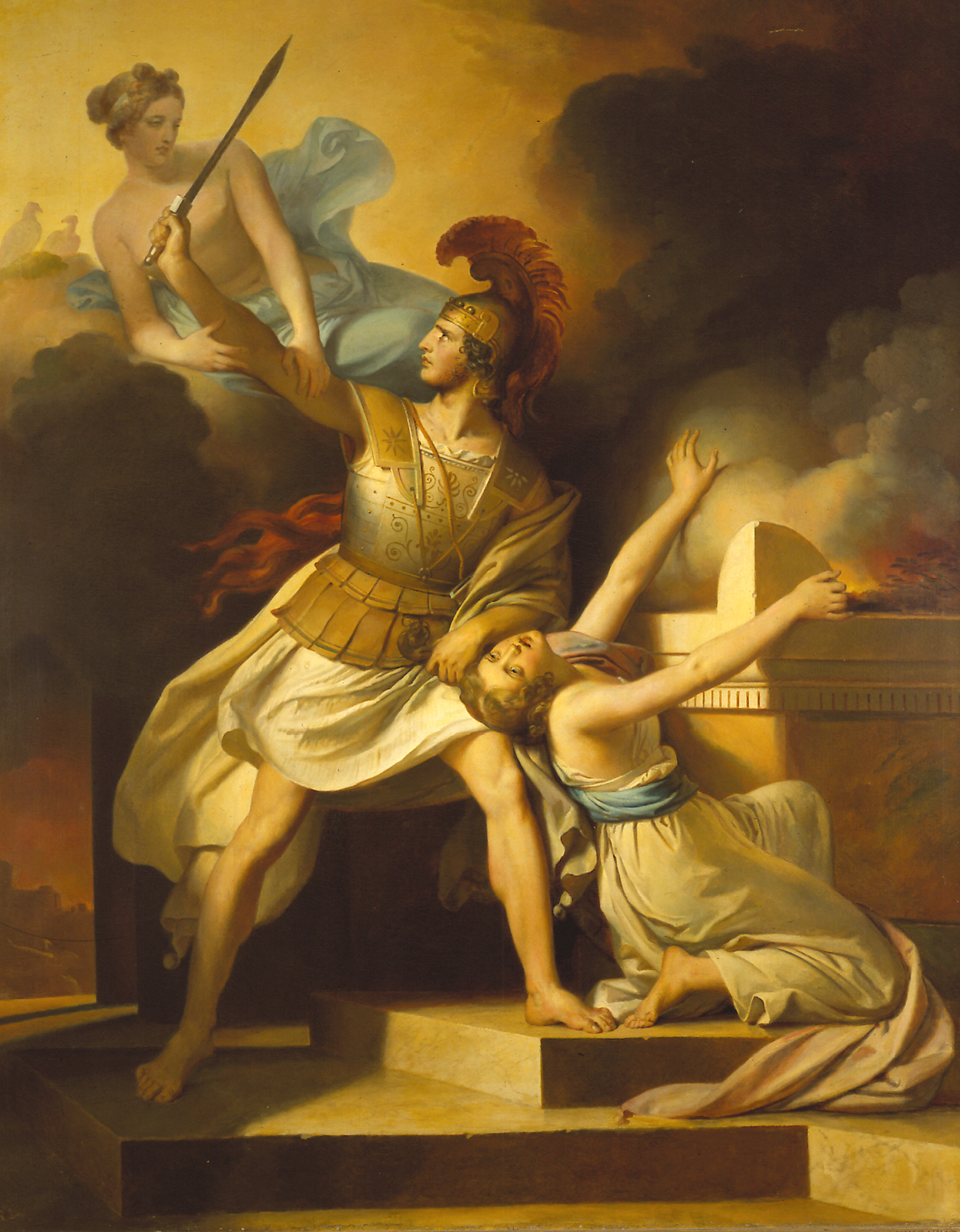Venus appearing to Aeneas and stopping him from immolating Helen
1822
Oil on canvas
228 x 179 cm
P. 2
On indefinite loan from the Government Art Collection, 1851
© Musée de Valence, photo Adam Repska
Information
Drawn from Book II of the Aeneid, this subject follows the recommendations of the critic La Font de Saint-Yenne (1688-1771), who suggested it to artists because it was “so rich in heroic facts, pathetic narrations, and great events”. Here, Venus shows her son the futility of killing Helen, since her mission is to ensure the survival of the Trojan race by founding a new Troy…Rome. Closer to his master David (1748-1825) than to his famous father Jean-Honoré (1732-1806), Alexandre-Evariste has clearly learned his lessons: aligned composition of faces on a large diagonal with the sword of Aeneas and Helen’s arms as a counterpoint; primacy of design over material; dynamic and sculpted draperies reinforcing the dramatic quality of the scene.
Suivez-nous sur les réseaux sociaux
Inscription newsletter







